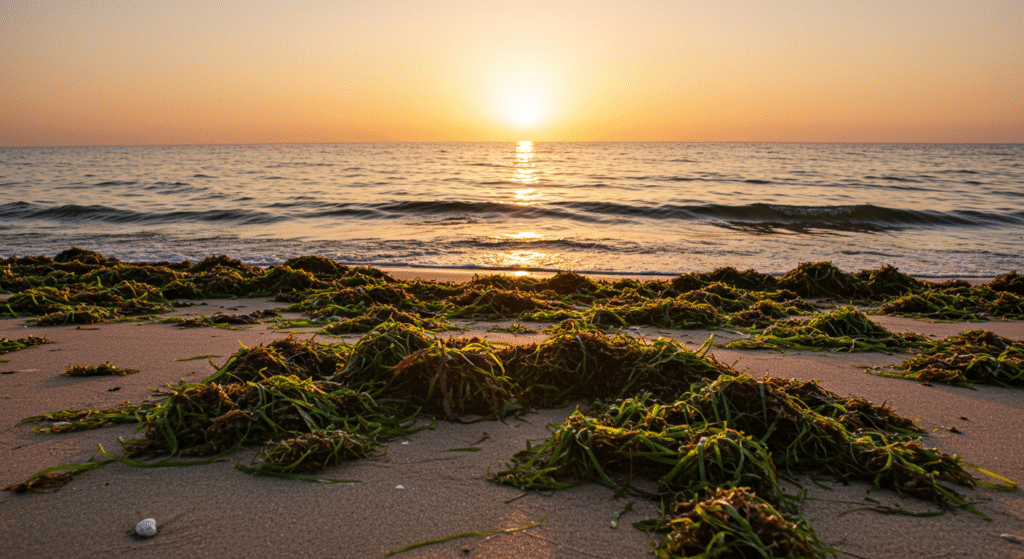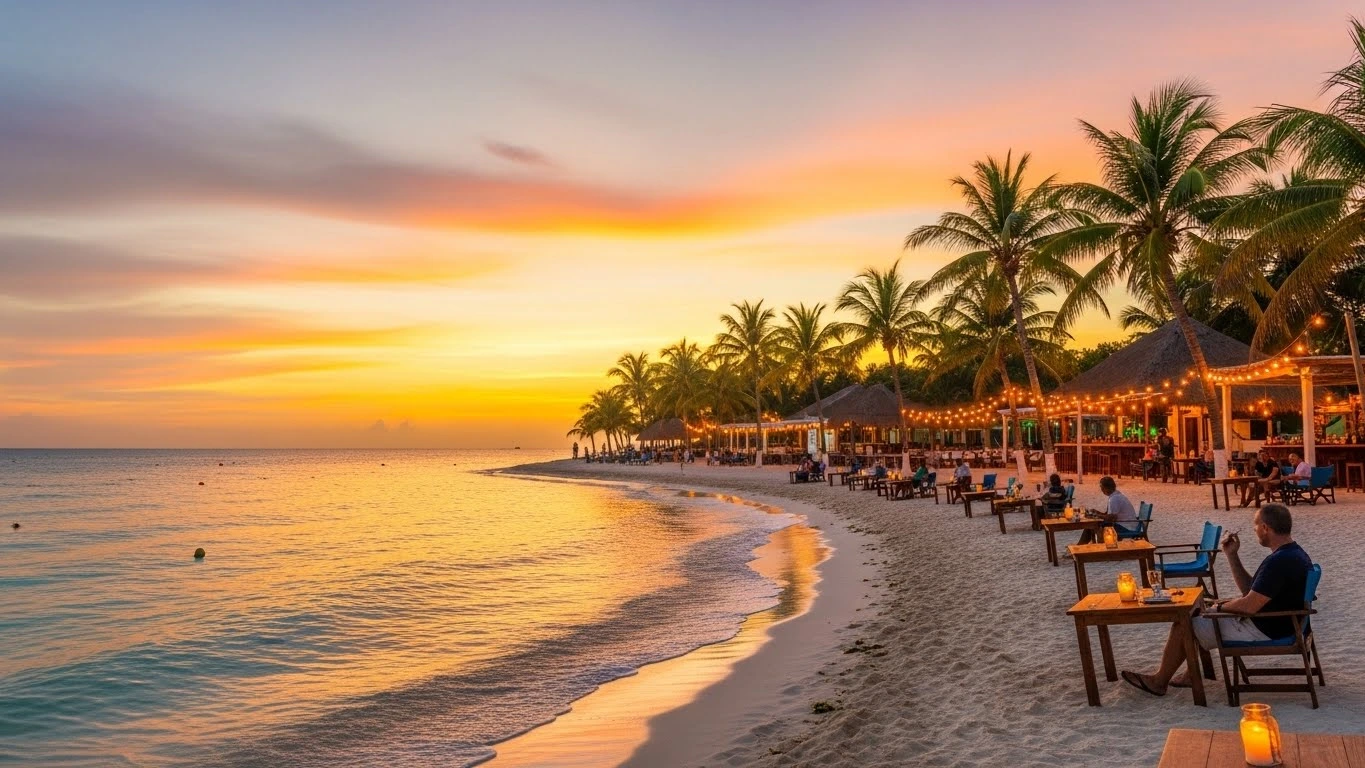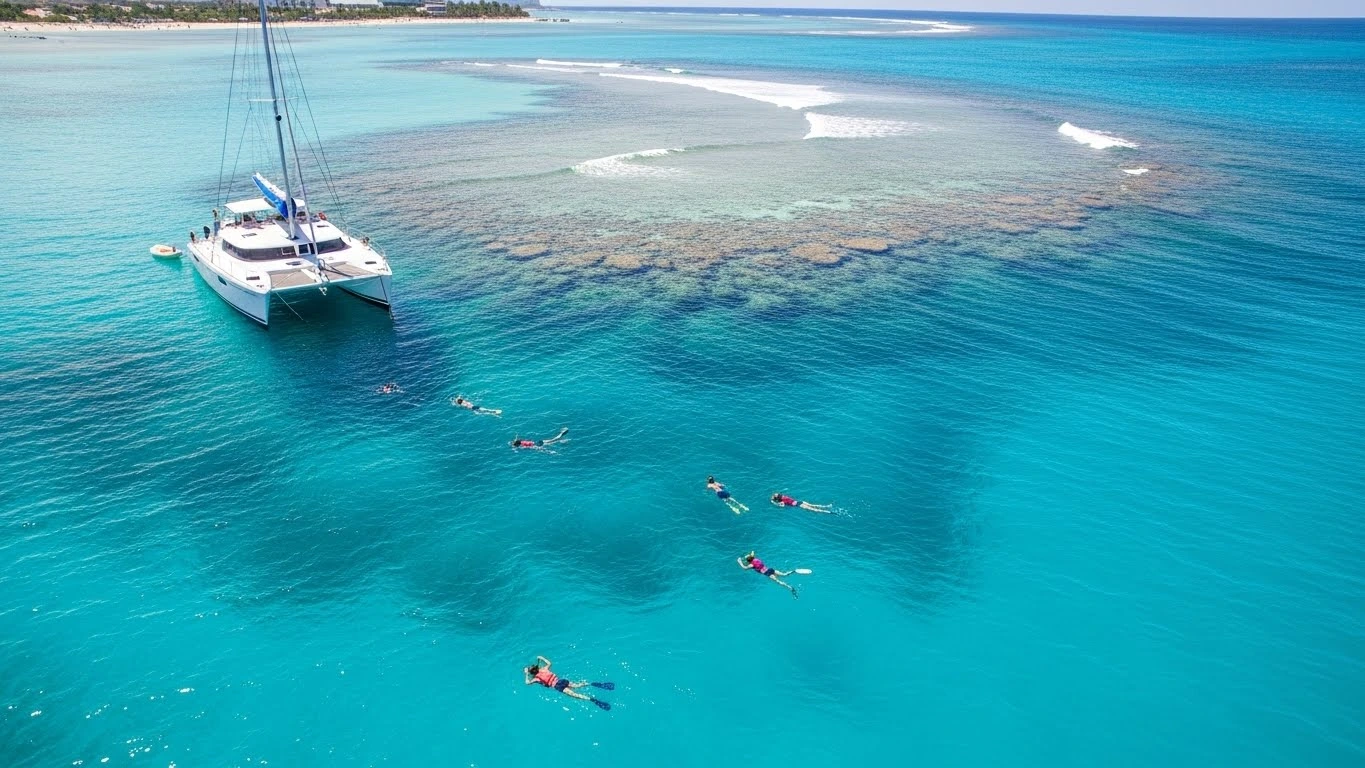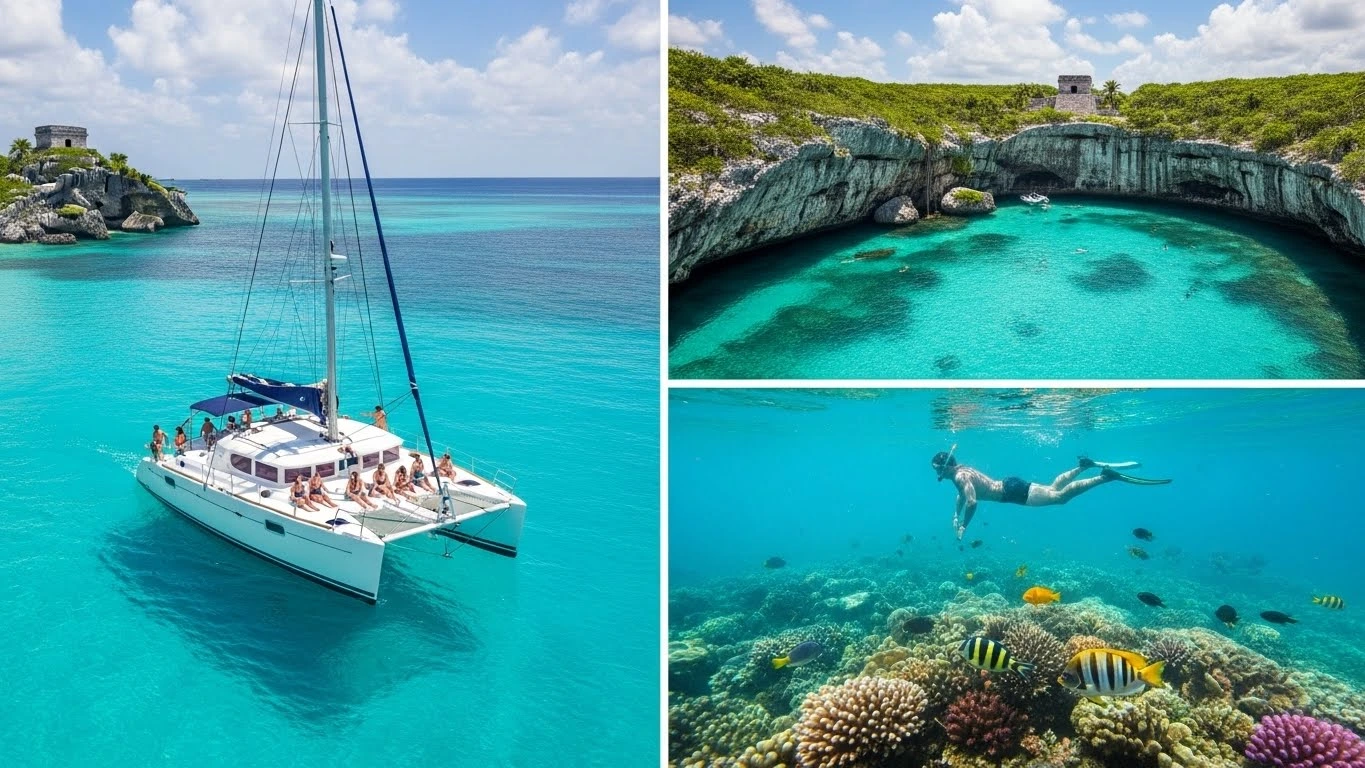If you’re dreaming about the perfect turquoise waters and powdery beaches of Cancun. It’s important to know a little secret about seaweed season in cancun. Timing matters more than you think. Especially when it comes to dealing with a pesky visitor, the seaweed. Cancun’s beautiful shores sometimes get affected by floating seaweed known as sargassum, and if you aren’t prepared, it can be a surprise.
Knowing when the seaweed season is in Cancun can help you plan the ultimate beach trip without any unwelcome interruptions. Let’s dive into everything you need to know to make the best out of your vacation!
What is Cancun’s Seaweed Season?

When people mention Cancun’s seaweed season, they mean the time when sargassum, a kind of brown algae, floats in large groups in the Atlantic Ocean. While it is natural and good for sea life, it can make your beach visit less enjoyable when it washes up on the shore.
Sargassum season usually lasts from April to October, with the busiest months being May to August. However, the exact timing can change each year based on ocean currents, water temperatures, and weather.
“Nature always shows its true colors.” — Ralph Waldo Emerson
This quote is especially true at Cancun’s beaches, whether you see clear waters or lots of seaweed.
Why Does Seaweed Hit Cancun’s Shores?
You might be wondering, why Cancun? The short answer is: geography and current patterns. Warm ocean currents in the Caribbean Sea carry enormous amounts of sargassum toward the Yucatán Peninsula.
Factors like:
- Rising sea temperatures
- Nutrient-rich runoff from the Amazon River
- Changing wind and current patterns
all contribute to the increase in sargassum blooms. It’s a worldwide phenomenon, but Cancun, Playa del Carmen, and Tulum often feel the brunt of it.
If you’re planning a visit but want a customized experience away from seaweed-heavy areas, consider booking a private catamaran tour for a more exclusive day on the water.
How Bad Can It Get?
It depends on the year. Some seasons are light, with minimal impact on the beaches, while others can be heavy, with daily cleanup efforts underway. Many hotels and resorts in Cancun are now proactive, setting up barriers offshore and employing crews to rake and remove seaweed promptly.
Still, during peak sargassum season, you might find beaches:
- Covered with thick mats of seaweed
- Slightly smelly due to the seaweed decomposing in the heat
- Less swimmable compared to the winter months
If pristine beaches are your main goal, it’s something you should definitely factor into your travel planning.
Best Time to Avoid Seaweed in Cancun
If you’re aiming for that postcard-perfect beach experience, the best months to visit Cancun are November through March. During these months:
- The weather is dry and pleasantly warm
- The seaweed presence is minimal to non-existent
- The ocean is typically clear and inviting
Bonus? It’s also the best time to go to Cancun, when the city is lively and buzzing with activities, festivals, and excursions.
Can You Still Enjoy Cancun During Seaweed Season?
Yes, absolutely! Cancun has much more to offer beyond its beaches. Even if you find yourself visiting during seaweed season, you can enjoy:
- Cenote tours: Dive into freshwater sinkholes far from any seaweed worries
- Ruins exploration: Chichen Itza, Tulum, and Coba await your curiosity
- Island getaways: Isla Mujeres and Cozumel often experience less sargassum than mainland Cancun
- Luxury resorts: Many have clean pools, spas, and beach areas that are well-maintained
A lot of travelers barely notice the seaweed when they plan a broader itinerary full of adventure and relaxation. And if you’re looking to escape the crowded beaches altogether. Consider booking a private catamaran tour to Isla Mujeres and sail to clearer waters, snorkel in pristine spots, and enjoy the Caribbean breeze without a worry.
Tips for Travelers During Seaweed Season
If you’re planning a trip during potential sargassum season, here’s how you can make the most of it:
- Check live beach cams: Several hotels and news outlets offer real-time views of beach conditions.
- Stay at resorts that clean regularly: Many upscale resorts invest in keeping their beaches pristine.
- Plan inland activities: Balance your beach time with cultural tours, jungle excursions, and city exploration.
- Be flexible: Remember, Cancun offers more than just sandy beaches; sometimes a change in plans leads to unexpected adventures.
Or why not create your dream adventure with a custom catamaran tour tailored exactly to your preferences?
The Future of Cancun and Sargassum
The local government and private sectors are investing heavily in solutions to combat the sargassum influx:
- Offshore barriers
- Enhanced cleanup teams
- Seaweed collection vessel
Long-term projects also focus on turning sargassum into biofuel and other useful products. So, while the problem isn’t going away overnight, efforts are actively being made to ensure that Cancun remains a top beach destination.
Final Thoughts
When it comes to visiting Cancun, timing can make a big difference in your experience. According to U.S. News Travel, certain times of the year are better for weather, crowd levels, and even seaweed conditions. Now that you know when seaweed season is in Cancun. You can plan smarter and set better expectations. Whether you choose to travel during the clear-water months or embrace the seaweed season with a more adventurous spirit, Cancun still offers incredible beauty, culture, and relaxation year-round.
Don’t let a little seaweed hold you back from making unforgettable memories under the Mexican sun!
FAQs About Cancun Seaweed Season
1. Is there a way to predict seaweed levels before my trip?
Yes! Many Cancun hotels update their websites daily during the peak seaweed season, and there are Facebook groups and live cams where travelers share recent beach conditions.
2. Is it still worth visiting Cancun during seaweed season?
Definitely yes. While the beaches might not always be perfect, Cancun has countless activities, luxurious resorts, and stunning inland attractions that can make your trip unforgettable.
3. Which areas are least affected by seaweed in Cancun?
Northern Cancun beaches, Isla Mujeres, and some parts of Cozumel generally receive less seaweed compared to the hotel zone beaches.
4. What happens to all the collected seaweed?
Much of it is taken to designated dump sites, but newer initiatives are turning it into construction materials, fertilizers, and even potential bioenergy sources.


